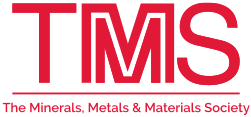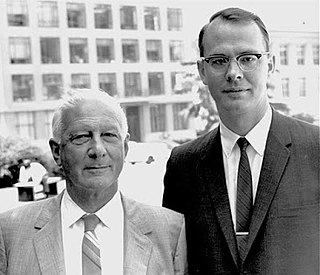This article has multiple issues. Please help improve it or discuss these issues on the talk page . (Learn how and when to remove these template messages)
|
OneMine is non-profit entity and searchable online global mining and minerals library. [1]
This article has multiple issues. Please help improve it or discuss these issues on the talk page . (Learn how and when to remove these template messages)
|
OneMine is non-profit entity and searchable online global mining and minerals library. [1]
OneMine is a non-profit entity governed by a steering committee whose members are nominated and serve for a term of three calendar years. It was launched as a collaborative effort between professional societies in the mining and minerals related fields to promote access to technical articles, periodicals, books, and other published work as research source for engineers in related disciplines. OneMine is a searchable online global mining and minerals library. [1] OneMine currently[ as of? ] contains more than 117,000 articles, technical papers, and other documents from mining societies around the world. Professional societies and associations in the mining, metallurgical, and tunneling communities may have their technical papers, journals, periodicals, and other published works considered for inclusion in the OneMine library.
OneMine contains over 130 years of peer reviewed works from professional societies including:
Among the published works accessible in OneMine are:
The ABET, incorporated as the Accreditation Board for Engineering and Technology, Inc., is a non-governmental organization that accredits post-secondary education programs in applied and natural science, computing, engineering and engineering technology.
There are several classification systems for the economic evaluation of mineral deposits worldwide. The most commonly used schemes base on the International Reporting Template, developed by the CRIRSCO - Committee for Mineral Reserves International Reporting Standards, like the Australian Joint Ore Reserves Committee - JORC Code 2012, the Pan-European Reserves & Resources Reporting Committee' – PERC Reporting Standard from 2021, the Canadian Institute of Mining, Metallurgy and Petroleum - CIM classification and the South African Code for the Reporting of Mineral Resources and Mineral Reserves (SAMREC). A more detailed description of the historical development concerning reporting about mineral deposits can be found on the PERC web site.
The American Institute of Mining, Metallurgical, and Petroleum Engineers (AIME) is a professional association for mining and metallurgy, with over 145,000 members. It was founded in 1871 by 22 mining engineers in Wilkes-Barre, Pennsylvania, United States, being one of the first national engineering societies in the country. Its charter is to "advance and disseminate, through the programs of the Member Societies, knowledge of engineering and the arts and sciences involved in the production and use of minerals, metals, energy sources and materials for the benefit of humankind."

The Institute of Materials, Minerals and Mining (IOM3) is a UK engineering institution whose activities encompass the whole materials cycle, from exploration and extraction, through characterisation, processing, forming, finishing and application, to product recycling and land reuse. It exists to promote and develop all aspects of materials science and engineering, geology, mining and associated technologies, mineral and petroleum engineering and extraction metallurgy, as a leading authority in the worldwide materials and mining community.

The Minerals, Metals & Materials Society (TMS) is a professional organization for materials scientists and engineers that encompasses the entire range of materials and engineering, from minerals processing and primary metals production to basic research and the advanced applications of materials.
James Edward Gill was a scientist, teacher, explorer and mine developer. Along with William R. James, Sr. he discovered the high-grade iron ore deposits of Quebec and Labrador. He is remembered for his important contributions in the fields of stratigraphy and Pleistocene geology.

Antoine Marc Gaudin was a metallurgist who laid the foundation for understanding the scientific principles of the froth flotation process in the minerals industry. He was also a professor at the Massachusetts Institute of Technology, and during World War II developed there the ore-processing techniques needed to extract uranium from its low grade ores for the Manhattan Project. He was a founding member of the National Academy of Engineering.

The Canadian Institute of Mining, Metallurgy and Petroleum (CIM) is a not-for-profit technical society of professionals in the Canadian minerals, metals, materials and energy industries. CIM's members are convened from industry, academia and government.
Mount Isa Mines Limited ("MIM") operates the Mount Isa copper, lead, zinc and silver mines near Mount Isa, Queensland, Australia as part of the Glencore group of companies. For a brief period in 1980, MIM was Australia's largest company. It has pioneered several significant mining industry innovations, including the Isa Process copper refining technology, the Isasmelt smelting technology, and the IsaMill fine grinding technology, and it also commercialized the Jameson Cell column flotation technology.

The Cornish Institute of Engineers (CIE) was founded in 1913 by the then Principal of the Camborne School of Mines, J.J. Beringer. Its first President, Josiah Paul, was appointed on 1 March 1913. It is the only institute in Cornwall and maintains a continuous programme of lectures. The origins of the Institute go back to the Camborne Association of Engineers, a small but prestigious body existing in the early years of the 20th century and composed mainly of mechanical engineers. Since 2011, the CIE has been affiliated with the Institute of Materials, Minerals and Mining.
Walter R. Hibbard Jr was an American metallurgist, a distinguished professor at Virginia Polytechnic Institute and State University and the 11th director of the U.S. Bureau of Mines in President Johnson's administration.
The Australasian Institute of Mining and Metallurgy (AusIMM) provides services to professionals engaged in all facets of the global minerals sector and is based in Carlton, Victoria, Australia.
Bhakta B. Rath is an Indian American material physicist and Head of the Materials Science and Component Technology of the United States Naval Research Laboratory (NRL), the corporate research laboratory for the United States Navy and the United States Marine Corps. He is the chief administrative officer for program planning, interdisciplinary coordination, supervision and control of research and is the associate director of research for Materials Science and Component Technology at NRL.
In 1973 the Institution of Engineers Australia and the Australasian Institute of Mining and Metallurgy (AusIMM) collaborated in the formation of the Australian Tunnelling Association. It is a professional organization of engineers and other skilled professionals committed to the maintenance of high standards and the expansion of technical and scientific knowledge pertaining to tunnel construction.
Hong Yong Sohn is an American engineer, currently a Distinguished Professor in Metallurgical Engineering at the University of Utah.
Alban Jude Lynch AO was a mining engineer and academic who helped develop the mineral processing teaching experience for mining students in Australia.
Dan J. Thoma is an American metallurgist who is a Professor in the Department of Materials Science and Engineering at the University of Wisconsin–Madison. He is the director of the Grainger Institute for Engineering at the University of Wisconsin–Madison. Thoma is also a past President of the American Institute of Mining, Metallurgical, and Petroleum Engineers (AIME). Thoma is well-known for his research on 3D printing technology, which he has carried out for over two decades.
Ian MorleyISO (1904–1989) was an Australian mining engineer and administrator, who advocated for safe mining practices and reforms for the Australian mining industry.

Geological engineering is a discipline of engineering concerned with the application of geological science and engineering principles to fields, such as civil engineering, mining, environmental engineering, and forestry, among others. The work of geological engineers often directs or supports the work of other engineering disciplines such as assessing the suitability of locations for civil engineering, environmental engineering, mining operations, and oil and gas projects by conducting geological, geoenvironmental, geophysical, and geotechnical studies. They are involved with impact studies for facilities and operations that affect surface and subsurface environments. The engineering design input and other recommendations made by geological engineers on these projects will often have a large impact on construction and operations. Geological engineers plan, design, and implement geotechnical, geological, geophysical, hydrogeological, and environmental data acquisition. This ranges from manual ground-based methods to deep drilling, to geochemical sampling, to advanced geophysical techniques and satellite surveying. Geological engineers are also concerned with the analysis of past and future ground behaviour, mapping at all scales, and ground characterization programs for specific engineering requirements. These analyses lead geological engineers to make recommendations and prepare reports which could have major effects on the foundations of construction, mining, and civil engineering projects. Some examples of projects include rock excavation, building foundation consolidation, pressure grouting, hydraulic channel erosion control, slope and fill stabilization, landslide risk assessment, groundwater monitoring, and assessment and remediation of contamination. In addition, geological engineers are included on design teams that develop solutions to surface hazards, groundwater remediation, underground and surface excavation projects, and resource management. Like mining engineers, geological engineers also conduct resource exploration campaigns, mine evaluation and feasibility assessments, and contribute to the ongoing efficiency, sustainability, and safety of active mining projects